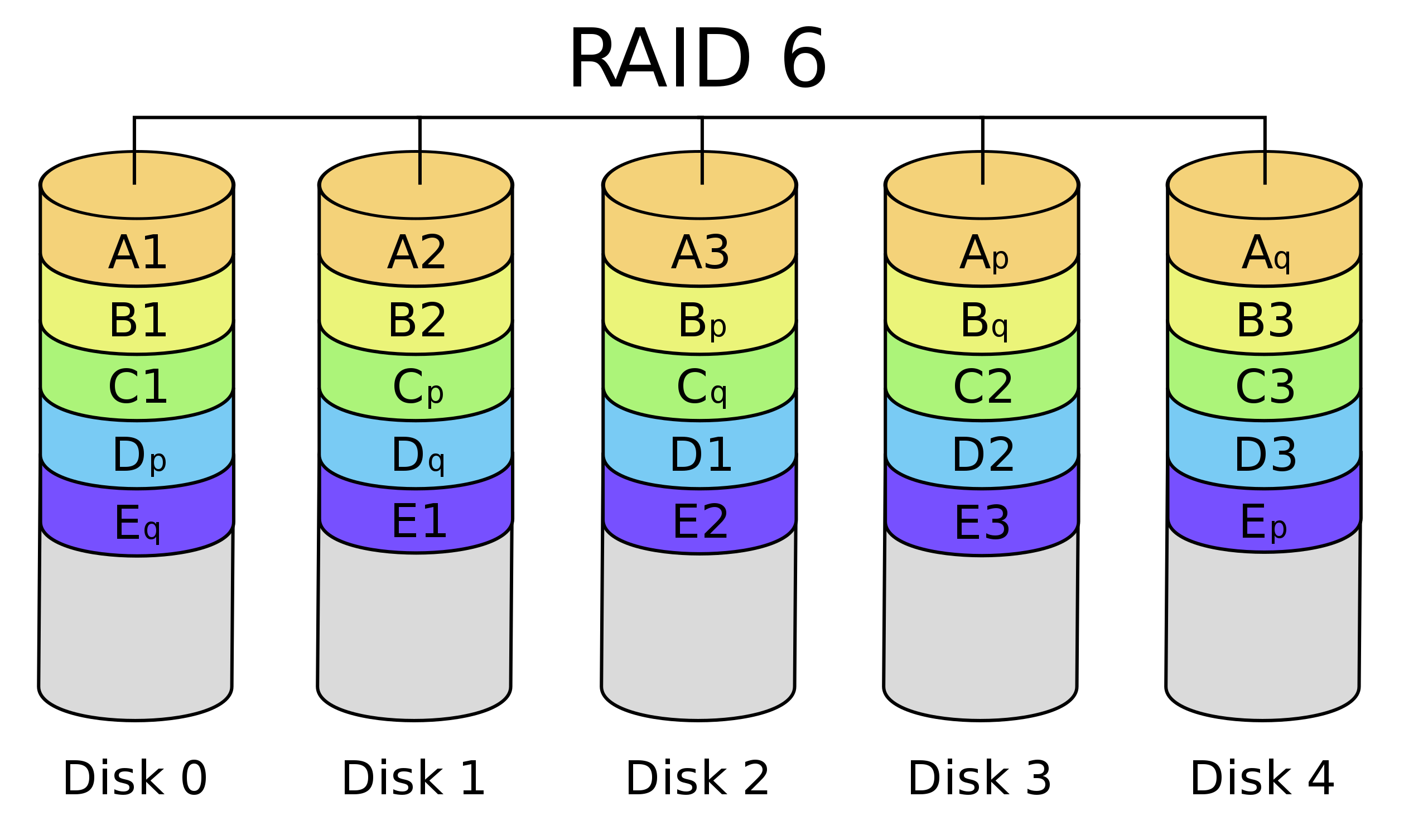RAID 6 is an extension of RAID 5. In RAID 6 data is striped into blocks, being written to two disks while parity data is written on the remaining two disks. This requires a total of four drives in the disk array. The parity data is distributed among the four disks. The dual parity provides additional fault tolerance when compared to RAID 5.
Advantages
With data being striped to multiple disks, the read transactions are very fast. Also, if two drives fail the RAID array can still be rebuilt.
Disadvantages
Additional parity data brings with it more calculations causing write transactions to be often times slower than RAID 5. Rebuilding an array in which one drive failed can take a long time.
Other considerations
When RAID arrays are built, the drives that make up the array often times are identical drives, coming off the same manufacturing run. When one drive fails the likelihood that the other drives in the RAID array will soon be failing is a concern. There are many stories of Systems Administrators replacing a failed drive and during the rebuild process a second drive failing.
